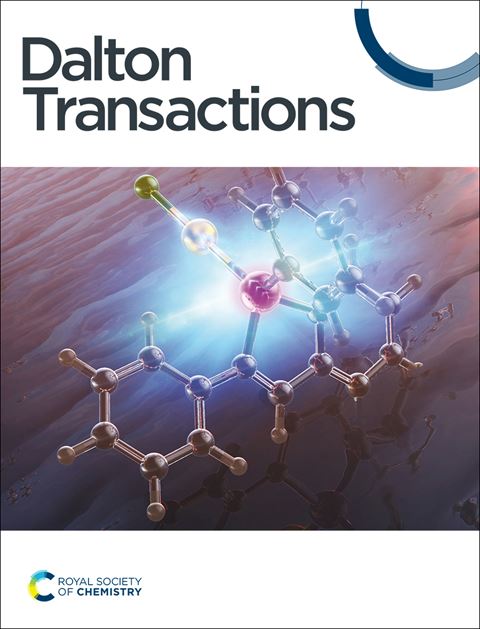基于金属-有机框架的MOF-74/Cu2O/Cu复合材料降解4-硝基苯酚的研究
IF 3.5
3区 化学
Q2 CHEMISTRY, INORGANIC & NUCLEAR
引用次数: 0
摘要
金属有机骨架(mof)由于具有高比面积、丰富的活性位点、组织良好的框架结构和多样的形态,被公认为先进的功能材料和理想的牺牲模板。然而,单元件mof已经无法满足日益增长的应用需求。本文以MOF-74为牺牲模板,在250℃下煅烧成层状MOF-74,合成了MOF-74/Cu2O/Cu复合材料。采用一系列表征技术分析了MOF-74/Cu2O/Cu中Cu的形态、化学成分和价态。结果表明,MOF-74/Cu2O/Cu继承了母体MOF-74的层次化结构。在MOF-74的热解过程中,部分Cu2+节点转化为Cu2O和Cu,形成MOF-74/Cu2O/Cu多组分复合材料。考虑到mof基复合材料的多组分和分层结构,在NaBH4存在下,评价了mof基复合材料降解4-NP的催化性能。此外,发现Cu2O和Cu的存在有效地缩短了还原4-NP的诱导周期,提高了催化速率。此外,MOF-74/Cu2O/Cu对MO和MB染料的降解具有较好的催化作用。本研究提出了一种基于mof不完全热解合成多相复合材料的简便方法,旨在促进功能材料的发展。本文章由计算机程序翻译,如有差异,请以英文原文为准。
Hierarchical MOF-74/Cu2O/Cu composite derived from metal-organic frameworks toward degradation of 4-nitrophenol
Metal-organic frameworks (MOFs) are recognized as advanced functional materials and ideal sacrificial templates due to their high specific area, abundant active sites, well-organized framework structure, and diverse morphologies. However, single component MOFs have been unable to meet the increasing application requirements. Herein, MOF-74 was used as a sacrificial template to synthesize a composite material MOF-74/Cu2O/Cu by calcinating hierarchical MOF-74 at 250 "℃" . A series of characterization techniques were employed to analyse the morphology, chemical components, and valence state of Cu in the MOF-74/Cu2O/Cu. The results revealed that the MOF-74/Cu2O/Cu inherits the hierarchical structure of parent MOF-74, which is constructed by nanosheets. Furthermore, particial Cu2+ nodes were transformed into Cu2O and Cu during the pyrolysis process of MOF-74, resulting in the formation of multicomponent composite material MOF-74/Cu2O/Cu. Considering its multicomponent and hierarchical structure, the catalytic performance of MOF-based composite material was evaluated for degrading 4-NP in the presence of NaBH4. Additionally, the presence of Cu2O and Cu was found to effectively shorten induction period for reducing 4-NP and enhance the catalytic rate. Moreover, MOF-74/Cu2O/Cu presented improved catalytic in the degradation of the dyes MO and MB. This study proposes a facile approach for synthesizing multiple phase composites based on the incompletely pyrolysis of MOFs, aiming to advance the development of functional materials.
求助全文
通过发布文献求助,成功后即可免费获取论文全文。
去求助
来源期刊

Dalton Transactions
化学-无机化学与核化学
CiteScore
6.60
自引率
7.50%
发文量
1832
审稿时长
1.5 months
期刊介绍:
Dalton Transactions is a journal for all areas of inorganic chemistry, which encompasses the organometallic, bioinorganic and materials chemistry of the elements, with applications including synthesis, catalysis, energy conversion/storage, electrical devices and medicine. Dalton Transactions welcomes high-quality, original submissions in all of these areas and more, where the advancement of knowledge in inorganic chemistry is significant.
 求助内容:
求助内容: 应助结果提醒方式:
应助结果提醒方式:


